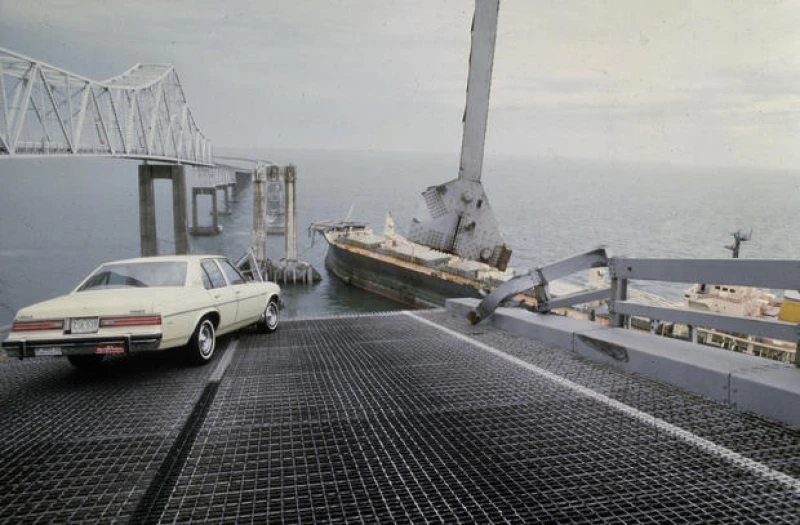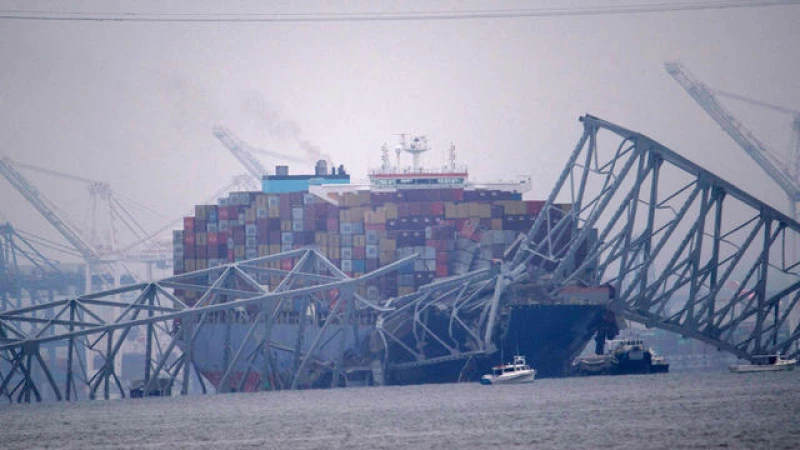In the aftermath of the devastation of the Francis Scott Key Bridge, which tumbled into the Patapsco River in Maryland following a collision with the cargo ship Dali, CBS News reports that a majority of bridges in the U.S. do not have any form of impact protection.
Incidents like the recent one that obliterated the 47-year-old Baltimore bridge are not unprecedented. A similar crash in 1980 at the Sunshine Skyway Bridge in Tampa Bay resulted in the loss of 35 lives. Subsequent to that tragedy, regulations were modified, mandating increased protection for all bridges constructed after 1991.
Structures such as fenders and dolphins, which absorb impact akin to a car bumper, are among the techniques employed to ensure bridge safety.

However, the Key Bridge was erected in the 1970s, necessitating retrofits and enhancements to meet current standards, as noted by retired bridge engineer Andy Herrmann.
"They would either reinforce the piers to withstand an impact or install a fender, a robust system, to redirect the vessel back into the navigable channel," Herrmann explained to CBS News. "Alternatively, they might opt for a solution like the one implemented at Sunshine Skyway: placing an island in front of the bridge."
According to the National Bridge Inventory, there are 4,207 bridges in the U.S. that allow ships to pass under them. Among them, only 36% are noted to have functional pier protection, with the Key Bridge being one of them.
The specifics of the protection of these bridges are not detailed in the inventory, nor is it indicated whether they could withstand an impact like the one in Baltimore on Tuesday. During that incident, a 984-foot, 116,000-ton cargo ship collided with a bridge support column while slowing down from about 7 knots (roughly 8 mph) just before the impact, according to the NTSB.
Expressing his astonishment at the impact, Jim Salmon from the Delaware River and Bay Authority stated, "I was shocked when I saw how that bridge was impacted by the vessel."
In an effort to prevent a similar tragedy, Delaware has allocated $95 million to enhance protections on the Delaware Memorial Bridge. This dual-span suspension bridge over the Delaware River connects Delaware and New Jersey, serving as a crucial link between sections of Interstate 95. The upgrades, which include new dolphin cells, are aimed at fortifying the tower structures to safeguard against collisions with larger and modern vessels, as described in the application for the improvements.
Salmon emphasized that these enhancements are crucial to "protect our tower structures" in case a ship loses steering, similar to the incident at the Key Bridge.
The Importance of Protective Systems for Bridges
According to Salmon, the recent bridge project serves as an "insurance policy" to prevent costly damages in case of accidents. The $95 million investment is likened to having insurance in place to protect the bridge from potential risks.
Once completed, the bridge will be shielded from large and fast-moving ships, capable of carrying up to 156,000 tons and traveling at 7 knots.
Structural engineer Matthew Roblez expressed surprise at the absence of a fender system to safeguard the Key Bridge. He suggested that installing such a system could have mitigated the severity of the recent collision.
While Roblez acknowledged that it may have been difficult to entirely prevent the Key Bridge collision, he emphasized that protective systems could have helped in dissipating the energy of the impact.
The National Transportation Safety Board (NTSB) will investigate the Key Bridge's structure as part of their examination into the recent collision and collapse.
NTSB Chair Jennifer Homendy highlighted data from the Federal Highway Administration, indicating that out of 615,000 bridges in the U.S., 17,468 are considered "fracture critical," meaning a failure in one part could lead to the collapse of the entire bridge.
As the investigation unfolds, the question arises: Will the recent bridge disaster prompt the government to mandate enhanced protections for aging bridges, especially in the aftermath of the Tampa bridge collapse four decades ago?







